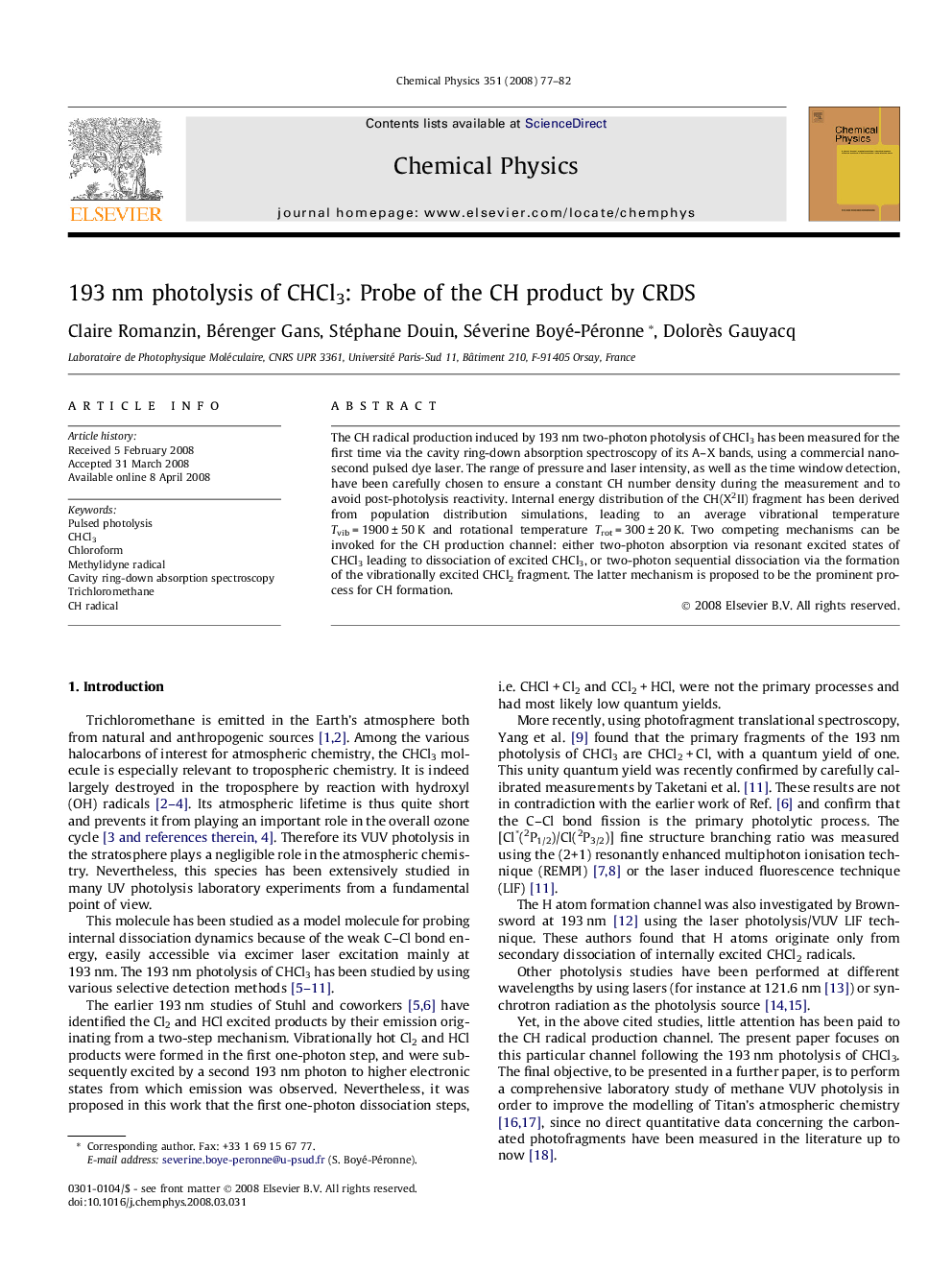| Article ID | Journal | Published Year | Pages | File Type |
|---|---|---|---|---|
| 5375539 | Chemical Physics | 2008 | 6 Pages |
Abstract
The CH radical production induced by 193 nm two-photon photolysis of CHCl3 has been measured for the first time via the cavity ring-down absorption spectroscopy of its A-X bands, using a commercial nanosecond pulsed dye laser. The range of pressure and laser intensity, as well as the time window detection, have been carefully chosen to ensure a constant CH number density during the measurement and to avoid post-photolysis reactivity. Internal energy distribution of the CH(X2II) fragment has been derived from population distribution simulations, leading to an average vibrational temperature Tvib = 1900 ± 50 K and rotational temperature Trot = 300 ± 20 K. Two competing mechanisms can be invoked for the CH production channel: either two-photon absorption via resonant excited states of CHCl3 leading to dissociation of excited CHCl3, or two-photon sequential dissociation via the formation of the vibrationally excited CHCl2 fragment. The latter mechanism is proposed to be the prominent process for CH formation.
Related Topics
Physical Sciences and Engineering
Chemistry
Physical and Theoretical Chemistry
Authors
Claire Romanzin, Bérenger Gans, Stéphane Douin, Séverine Boyé-Péronne, Dolorès Gauyacq,
